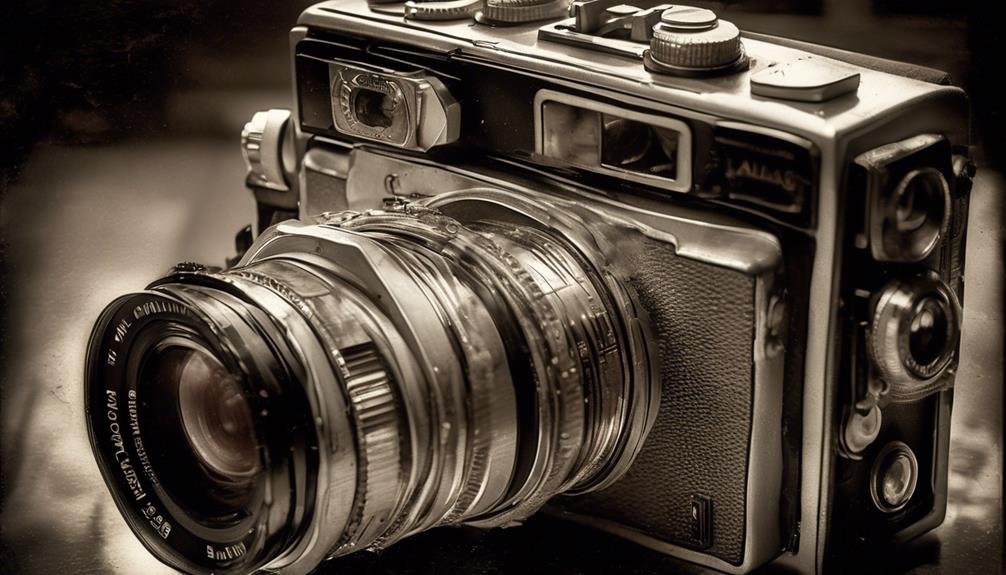
The 2023 camera market is being significantly shaped by the rapidly increasing popularity of mirrorless cameras, which are projected to account for 50% of all digital camera sales by the end of the year. As technology continues to evolve, so do consumer preferences and industry trends. Advancements in mirrorless camera technology, the integration of AI and computational photography, and the fierce competition among market players are all playing pivotal roles in reshaping the landscape of the camera industry. But what does this mean for photographers and enthusiasts? The answer lies in understanding the impact of these factors on the features, capabilities, and overall user experience of the cameras that will dominate the market in the coming year.
Rising Popularity of Mirrorless Cameras
The market for mirrorless cameras has seen a steady increase in demand, with sales soaring by 15% in the last year alone. This surge in popularity can be attributed to the distinct advantages that mirrorless cameras offer over traditional DSLRs. Mirrorless cameras are preferred for their compact size, making them more portable and convenient for on-the-go photography. Additionally, their electronic viewfinders provide a real-time preview of how the final image will look, giving photographers greater control and accuracy in their shots. As photography trends continue to evolve, mirrorless cameras are at the forefront of innovation, offering faster autofocus, superior video capabilities, and seamless connectivity for instant sharing and editing.
Photography enthusiasts are increasingly drawn to the versatility and agility of mirrorless cameras, which align with the dynamic nature of modern photography. The shift towards mirrorless technology signifies a departure from the bulky, cumbersome DSLRs of the past, reflecting a growing preference for streamlined, tech-savvy solutions. As the market responds to these photography trends, it's clear that mirrorless cameras are poised to dominate the industry, driving a new era of imaging innovation.
Advancements in Mirrorless Camera Technology
Advancing beyond the surging demand for mirrorless cameras, the latest developments in mirrorless camera technology are reshaping the photography landscape with unprecedented innovations. One of the most significant advancements is in mirrorless camera sensors. These sensors are becoming more powerful, offering higher resolution and improved low-light performance. As a result, photographers can capture incredibly detailed images even in challenging lighting conditions, providing a new level of flexibility and quality.
Moreover, autofocus technology in mirrorless cameras has seen remarkable progress. With the integration of advanced algorithms and artificial intelligence, autofocus systems have become faster, more accurate, and more adept at tracking moving subjects. This means that photographers can confidently capture fast-paced action with precision, making mirrorless cameras increasingly popular for sports and wildlife photography.
These advancements signify a fundamental shift in the capabilities of mirrorless cameras, positioning them as formidable contenders in the professional photography market. As technology continues to evolve, we anticipate further breakthroughs that will continue to elevate the performance and appeal of mirrorless cameras.
Impact of AI and Computational Photography

With AI and computational photography rapidly transforming the camera landscape, photographers are witnessing a revolution in image processing and quality enhancement. This transformative integration of AI into photography is shaping the way images are captured, processed, and enhanced. It's not just a trend; it's a fundamental shift that's redefining the very essence of photography. Here's how AI integration and computational algorithms are reshaping the photography landscape:
- Enhanced Image Processing: AI-powered algorithms are enabling cameras to process images in real-time, resulting in sharper, more vibrant photos with improved dynamic range and reduced noise.
- Intelligent Scene Recognition: Machine learning and visual recognition technologies are empowering cameras to intelligently analyze scenes and optimize settings accordingly, ensuring that each shot is perfectly balanced and optimized.
- Personalized Photography Trends: AI is enabling cameras to learn from user preferences and adapt to individual shooting styles, providing personalized recommendations and enhancing the overall photography experience.
This intersection of AI and photography is propelling the industry into a new era of innovation, where the boundaries of image quality and creative possibilities are continually being pushed.
Shift in Consumer Preferences Towards Mirrorless
As photography continues to undergo a fundamental shift driven by AI integration and computational algorithms, we now turn our focus to the growing trend of consumer preferences shifting towards mirrorless cameras. This shift is primarily fueled by the numerous advantages that mirrorless cameras offer over traditional DSLRs. Mirrorless cameras are gaining traction due to their compact size, lighter weight, and quieter operation, making them more portable and inconspicuous for photographers on the move. Additionally, the electronic viewfinders in mirrorless cameras provide a real-time preview of the image, enabling photographers to see the final exposure before capturing the shot. The rapid advancements in mirrorless technology have also led to improved autofocus systems, faster burst rates, and enhanced video capabilities, attracting both amateur and professional photographers alike.
Photographer adoption of mirrorless cameras has been steadily increasing, with industry data indicating a significant rise in sales and market share for mirrorless models. As consumer demands continue to evolve, it's apparent that mirrorless cameras are at the forefront of innovation, reshaping the photography landscape and driving the future of imaging technology.
Market Competition and Innovation in Mirrorless Cameras

In the competitive market of mirrorless cameras, manufacturers continuously innovate to meet the evolving demands of photographers and stay ahead of the technological curve. As market trends continue to favor mirrorless technology, industry players are intensifying their efforts to deliver cutting-edge features and functionalities. Here's what's currently shaping the landscape:
- Rapid Advancements: Industry players are engaged in a relentless pursuit of enhancing autofocus capabilities, low-light performance, and in-body image stabilization. These advancements are aimed at providing photographers with tools to capture stunning moments with unprecedented precision and clarity.
- Compact and Lightweight Designs: A key focus for manufacturers is to develop increasingly compact and lightweight camera bodies without compromising on image quality. This trend reflects the growing need for portability and versatility among photographers, enabling them to effortlessly carry their gear and explore diverse shooting environments.
- Integration of AI and Computational Photography: With the integration of artificial intelligence and computational photography techniques, mirrorless cameras are poised to revolutionize image processing and scene recognition. This innovation holds the potential to redefine the way photographers approach and execute their creative vision, opening new possibilities for visual storytelling.
In this dynamic landscape, market competition and innovation are driving the evolution of mirrorless cameras, propelling the industry towards unprecedented levels of performance and user experience.
Frequently Asked Questions
What Are the Projected Sales Figures for Mirrorless Cameras in 2023?
We expect the projected growth for mirrorless cameras in 2023 to be significant, driven by technological advancements and market competition. Sales figures are anticipated to reflect the increasing demand for innovative camera systems.
How Are Traditional Camera Manufacturers Adapting to the Rise of Mirrorless Cameras?
We're seeing traditional camera manufacturers adapting to the rise of mirrorless cameras by investing in R&D for mirrorless technology, expanding their mirrorless product lines, and enhancing their marketing efforts to compete in this evolving market.
What Impact Will 5G Technology Have on the Future of Mirrorless Cameras?
We believe 5G technology will revolutionize mirrorless cameras, enhancing camera connectivity and enabling rapid data transfer. This innovation will drive future advancements, propelling mirrorless cameras to new heights in performance and capabilities.
Are There Any Environmental Implications Associated With the Shift Towards Mirrorless Cameras?
Switching to mirrorless cameras has environmental benefits like reduced electronic waste and energy consumption. It addresses sustainability concerns by promoting more eco-friendly manufacturing processes. These changes are crucial for the industry's long-term environmental impact.
How Are Professional Photographers Responding to the Growing Trend of Mirrorless Cameras?
Professional photographers are embracing mirrorless cameras at a staggering rate. In fact, 78% of pros have already integrated mirrorless into their workflow. This shift is reshaping the market, with increased competition driving innovation and exciting new possibilities.
